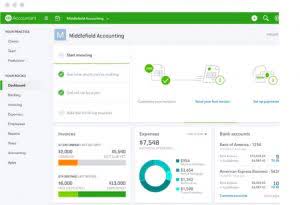ContentADP: Best for complex business modelsPaychex Review: Best Payroll Software for ScalabilityADP Workforce NowBest Payroll…
Bank reconciliation 101: How to reconcile accounts easily
Content

Check to see if missing items such as bank charges and deposits (ie appearing on the bank statement) have now been entered in the cashbook. Bank reconciliation helps to identify errors that can affect tax and financial reporting. All deposits and withdrawals posted to an account must be used to prepare a reconciliation statement. Kathy has over 30 years experience helping small businesses succeed.

An analytics review can tell you whether your accounting records show any fraud or accounting errors. For instance, let’s say that you make the same purchases every year, but this year the balance sheet showed that you went over the investment by a significant amount. For instance, let’s say that you have your credit card receipts that show you paid or received a certain sum, but your credit card bills tell a different story. As small as they may seem, these changes can significantly impact your bank account balance. Understanding the importance of bank reconciliation and making time in your schedule to complete this task are two different things. All the motivation in the world can’t magically open up time for you to spend going over bank statements and clearing up any issues.
Understanding the Bank Reconciliation Statement
For instance, you need to ensure there’s no missing inventory or components. Remember to be careful with these, because if you get audited by the SEC, IRS, or even investors you’ll be held accountable for their accuracy. After all reconciliation adjustments, the final correct cash balance captured in the company accounting records and on its balance sheet as at 30 September 20XX was $2,000. Since the NSF check has previously been recorded as a cash receipt, a journal entry is necessary to update the company’s books.
Bankrate follows a strict
editorial policy, so you can trust that our content is honest and accurate. The content created by our editorial staff is objective, factual, and not influenced by our advertisers. Our mission is to provide readers with accurate and unbiased information, and we have editorial standards in place to ensure that happens. Our editors and reporters thoroughly fact-check editorial content to ensure the information you’re reading is accurate. We maintain a firewall between our advertisers and our editorial team.
How to Check a Bank Reconciliation Statement – Top Tips
The signed statements should then be carefully filed in date order for each account. Reconciling bank statements also helps to identify errors that affect tax reporting. Without reconciling, companies may pay too much or too little in taxes. Remember that items such as outstanding checks do not need https://www.bookstime.com/ be recorded into the G/L since they are already there. However, anything that affects the G/L such as unexpected deposits, interest income, or service fees will need to be recorded. The final step in the bank reconciliation process is to record journal entries to complete the balancing process.
- A bank reconciliation begins by showing the bank statement’s ending balance and the company’s balance (book balance) in the cash account on the same date.
- Anything very old, very large or peculiar should be checked out.
- By comparing previous account activity levels and purchases, you may find out whether there were any issues or not.
- Prior to reconciliation, a company should make sure all transactions have been recorded up to the end of the bank statement.
As a result, bank transactions can be automatically imported into an accounting software, where one is able to categorize and match a large number of transactions with one click of a button. This significantly reduces the effort that goes into the reconciliation process and enables businesses to verify their cash balances anytime throughout the month. Adjust your accounting cash balance by adding any interest income or bank deposits to your credit that are not in your accounting records. As for deposits in transit that appear in your accounting records but have not yet cleared the bank, be sure to add those transactions to your bank statement as pending transactions.
COMPARE THE DEPOSITS
Those payments are recorded in your G/L, but they have yet to hit the bank. You need to subtract both checks from your bank balance, as well as any other checks listed in your check register that haven’t cleared. It’s common for your bank statement to have a higher ending balance than your G/L account shows. While it may be tempting to assume you have more money in the bank than you think, it’s a safe bet that the difference is checks and other payments made that have not yet hit the bank. That means your account could quickly become overdrawn, with penalties and fees adding up in a matter of days. This is probably the most important step in the entire bank reconciliation process.
If the figures are equal, then a successful bank reconciliation statement has been prepared. The balance of the cash account in an entity’s financial records may require adjusting as well. For instance, a bank may charge a fee for having the account open. The bank typically withdraws and processes the fees https://www.bookstime.com/blog/time-is-money automatically from the bank account. Therefore, when preparing a bank reconciliation statement, any fees taken from the account must be accounted for by preparing a journal entry. To perform a bank reconciliation, you need a few items including a bank statement and your internal accounting records.
What Is Bank Reconciliation?
Theoretically, the transactions listed on a business’ bank statement should be identical to those that appear in the accounting records of the business, with matching ending cash balances on any given day. Interest income reported on the bank statement has usually not been accrued by the company and, therefore, must be added to the company’s book balance on the bank reconciliation. The final transaction listed on the Vector Management Group’s bank statement is for $18 in interest that has not been accrued, so this amount is added to the right side of the following bank reconciliation. Bank reconciliation statements compare transactions from financial records with those on a bank statement.
Once you’ve entered these numbers, the template should calculate the ending bank balance in Cell B9. The calculated value in B9 should match the ending bank balance you input directly from the bank in C9. If these figures don’t match, go back and review the inputs in B5-B8. Bank reconciliation accounting is performed by the accounts payable department. It’s a means of comparing bank statements against a company’s personal records to spot any discrepancies, mistakes, cash manipulations, or fraudulent charges.


This Post Has 0 Comments